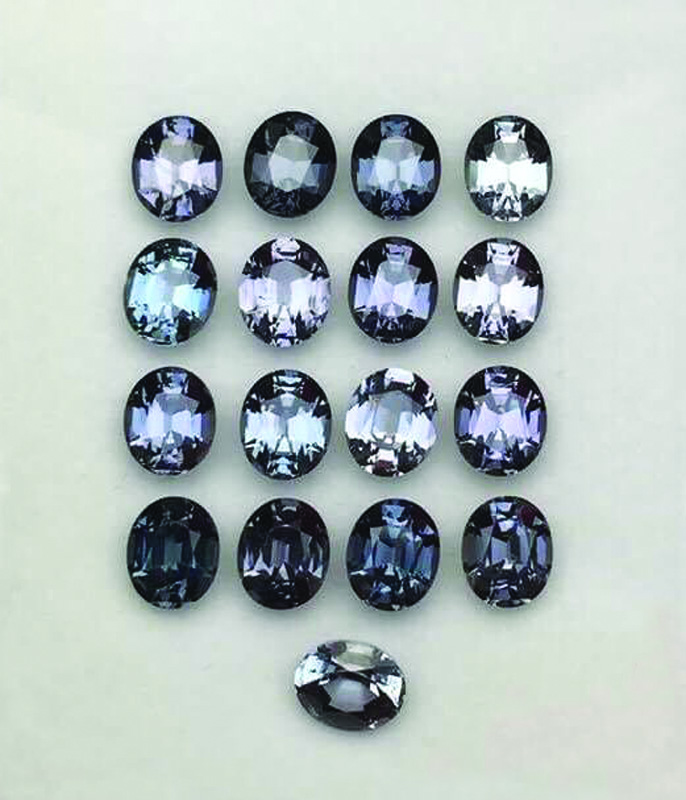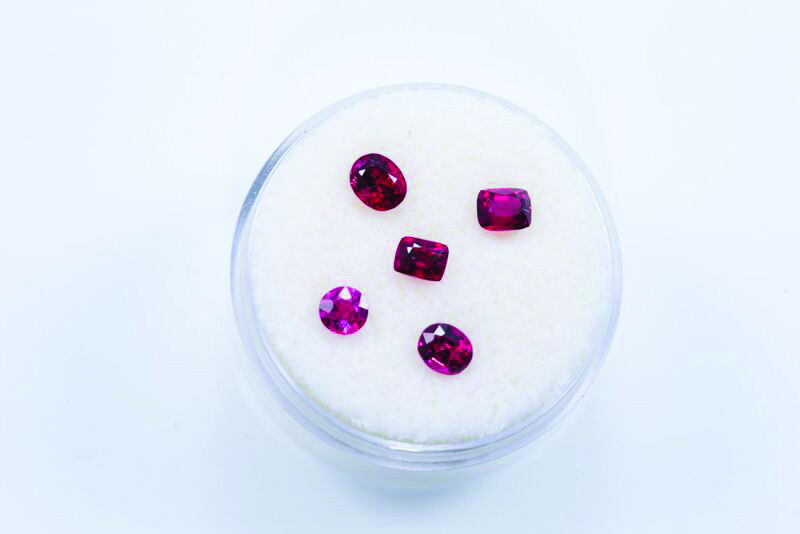
Variety of gems
Spinels form in a broad spectrum of colours easily competing with rubies and sapphires for beauty. They typically range from a pale, reddish-orange to a deep red, and can also be found in cobalt blue.
There are also two other spinel colours worth noting: bright pink and grey. Though these two colours are rare to find in nature, this gemstone is one of the few to exhibit them naturally.
Not many pink gems are found naturally, so spinel is the perfect choice for pink-lovers, as it’s much more affordable than a fancy pink diamond. On the other hand, grey spinel is something else entirely. No other gemstone in the market is found naturally in this colour.
It can also be found, albeit more rarely, in yellow, orange, colourless, black, and green.
Changing times
Recently, the American Gem Trade Association (AGTA) and Jewelers of America (JA) announced spinel was to be made August’s other official gemstone alongside the peridot. This decision will open up a vast range of options for August babies who don’t enjoy greens, and jewellers looking to meet this new market demand.

The modern birthstone list, created by the JA in 1912, gained new gemstones in both 1952 and 2002. “At certain moments in history, when there is a strong call from gem enthusiasts to expand the list of official birthstones, JA believes in recognizing the importance of historically significant gemstones and giving gemstone lovers a choice that suits their preferences,” says JA president and CEO, David Bonaparte. Spinel’s addition to this list has been a long-awaited decision for some gemmologists and is an important announcement for the jewellery world, especially for retailers who offer birthstone pieces and for designers who are trying to creatively diversify. Variety matters.
Advantages of spinels
There are many advantages to using spinels in jewellery over other precious gemstones. Unlike peridot or emerald, the spinel is resistant to chemical and physical weathering. A spinel’s hardness makes them easy for bench jewellers to set in pendants and rings.
Spinels can also resist high temperatures without changing colour or breaking. They simply must be left to cool down slowly afterwards, so as to not stress the stone.
Since they are not yet as popular as rubies or sapphires in the retail market, prices are still inferior if comparing an eye-clean, perfectly-cut, deep-red coloured spinel to a ruby of the same quality.

It’s a similar situation for spinels akin to sapphires, as it’s possible to have the beautiful blue of a sapphire, for the price of a spinel. It makes the stone a good alternative. Although, with growing popularity, it won’t be long before spinel prices go up—it might even be a good investment idea, since spinels weighing over five carats are rare and hard to find.
Another advantage of this gemstone is it doesn’t have many treatments available to it. Only two have been detected: heating and fracture filling.
Heating was not a widely-practiced treatment until 2005 because it didn’t have any impact on the colour. It is uncommon to find treated spinels for sale in the market. Recently, however, heat has shown to improve transparency on gem material found in regions of Tanzania. Thus, the colour found in the spinel is its true, untreated colour.
For the fissure filling, using a microscope or a jeweller’s loupe, you can usually see iridescence along the filled fissure which serves to improve the clarity of the stone.





